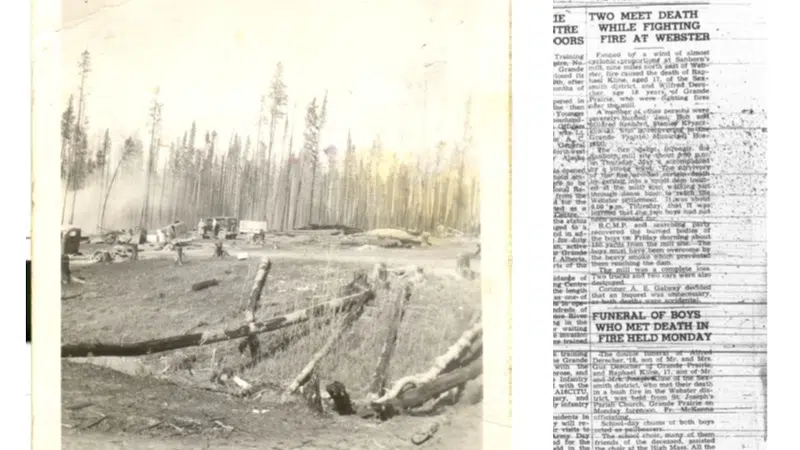
Teenage fire fighters who died in 1944 will be commemorated on Saturday
The Peace Country Historical Society is holding a free event at the Grande Prairie Museum on Saturday, November 16, to commemorate two local teenagers who lost their lives battling the Moose Hill wildfire in 1944.
Raphael Klein and Wilfred Derocher were both around 18-years-old in 1944, when they volunteered to help battle the wildfire as it threatened the Sanford Mill, north of Sexsmith.
The fire began in early May of 1944, during the height of World War II, and due to a dry winter and spring, along with the strong winds, the fire quickly spread. Derocher and Klein, along with a handful of other volunteers, most of whom were in their 50’s and unable to serve in the war, volunteered to fight the blaze.
On May 4th, they were dispatched to the Sanford Mill site, to try and stop the fire from spreading any further, but their efforts were in vain, and within a few hours the blaze had grown out of control. The crew of about 16 people ran to a nearby pond, that was used as a water source for the mill, where they sought shelter from the flames. All except Derocher, Klein, and another young man named Stanley Krezowski, who instead ran to the nearby barn to release the horses corralled inside.
